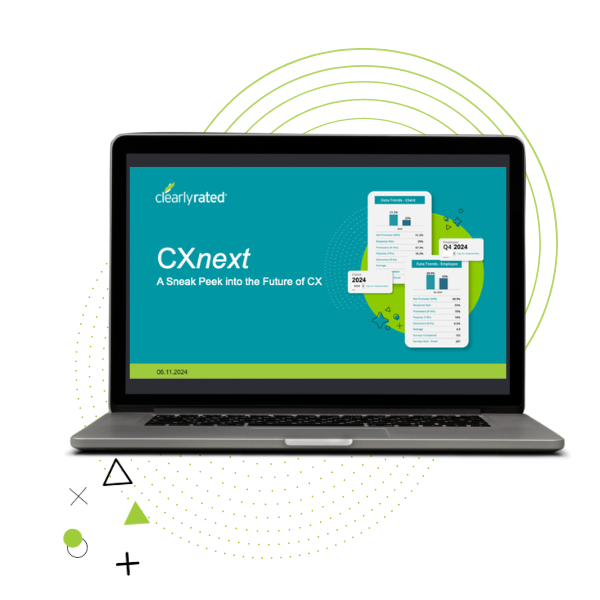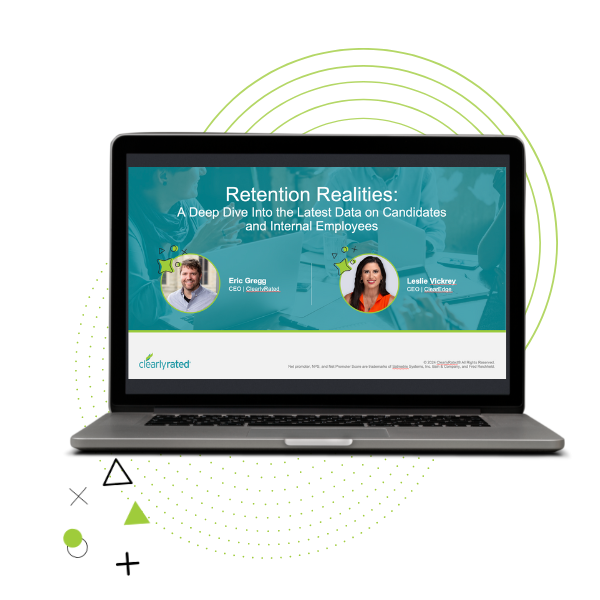Client-facing survey programs are like x-rays for your business operations. You may find that everything is healthy, or you may detect issues. The latter is what can also lead to survey objections from your team. However, if you detect issues, a good Net Promoter Survey® (NPS) program makes it easy to drill down so you can find and fix the problem before it grows. In this way, it sets the stage to build a strong customer experience (CX) that permeates your organization’s culture. With an advanced NPS program in place you can:
- Get feedback from clients in near real time
- Analyze response data with simple search, segment, and filter options
- Integrate client feedback data with your CRM, ATS, or other client database
5 NPS Survey Objections and How to Overcome Them
Despite the benefits satisfaction survey programs deliver, CX champions sometimes meet internal roadblocks. Here are five common fears and how you can overcome them.
Objection 1: We don’t want to overwhelm busy clients.
Ah, yes — survey fatigue. Leaders often assume, “Because I don’t take surveys, our clients won’t.” But this line of thought also includes the fear of low client engagement that keeps response rates even lower. But poor engagement is something you want to fix, right? Show your clients you care by asking for their feedback in a systematic way and using it to drive real improvements to their service. Here are some ways to overcome survey fatigue and boost response rate:
- Personalize the ask. Sales and accounts teams can use this as a positive client touchpoint.
- Don’t take up too much time. Keep your survey short.
- Offer incentives to survey respondents, like raffles or choosing a charity and donating a lump sum that grows with your number of responses.
- Communicate results post-survey to your staff and your client base to show them that their feedback matters.
Objection 2: We’re not ready.
This could be for any number of reasons. “Our data isn’t clean.” “We don’t have an easy way to manage the data.” “The lift will be too much.” It’s a classic case of analysis paralysis. The fact is your organization will never get around to it if people only focus on the reasons why you can’t. Your team simply must start somewhere, and when you do, you’ll be able to find ways to make things easier moving forward. As people see evidence of positive changes resulting from client feedback, your team will likely be more driven to improve their efforts around the initiative.
Objection 3: We might get negative feedback.
Yep. This is true. We won’t sugarcoat it. But keep in mind that, whether you hear them or not, customer sentiments are there. What good is sticking your head in the sand? Your organization needs this feedback. If you don’t get it, you risk a steady decline in your reputation as service issues don’t get the attention they deserve. Plus, there’s something called the “Service Recovery Paradox” (SRP). Basically, you earn more loyalty from your clients after you’ve made a mistake but then fixed it. This has nothing to do with the service failure and everything to do with how your firm handles it. If you don’t ask, though, you won’t have the chance to make things right and recover. So, frame the survey as a tool to help your organization improve, build on its strengths, and strengthen client relationships.
Objection 4: We won’t know what to do with the feedback.
It’s true that you shouldn’t ask for feedback if you don’t plan to do anything with it. If clients see room for improvement and take the time to answer your survey honestly, they should feel like you care about their feedback. If you ignore it, you’ll rub salt in the wound. While this concern may be the most fair objection, that doesn’t mean you have to accept it. Simply commit to take action after reviewing the survey results. Here’s how:
- Own it. In other words, plan to stay accountable to the results. Use this opportunity to take in feedback, make plans to improve and communicate those plans internally.
- When you find nuggets of good news in your survey results, celebrate those wins with internal employees. If you’re using ClearlyRated, there’s even a built-in “shout out” feature to help you spread the word and boost morale.
- Be transparent with clients about any issues you uncover—and how you plan to address them. When you provide specifics about how you’re (already) solving the problem, you assure clients that you’ve taken their feedback to heart. Use the 2-1-1 method for your follow up plan.
Objection 5: We already know how our clients feel.
You may hear, “I talk to my clients all the time. I know how they feel.” Okay, but how often do they really talk? And do they connect with every client? Too often business leaders and those on the frontlines want to cherry pick clients for getting feedback (psst! This relates to the fear of negative feedback). Remind them that the true purpose of survey programs is gaining a full understanding of your CX. Only then can you improve overall customer retention and optimize account growth efforts.
Remember that not all survey results will be bad. Through their survey programs, many companies find very satisfied customers and learn how to capitalize on strengths. We wish you well as you chart the path toward procuring valuable customer feedback for your organization—and we’ll be glad to help. Learn more or even contact us today.





